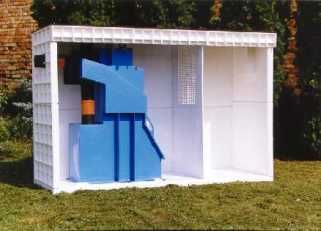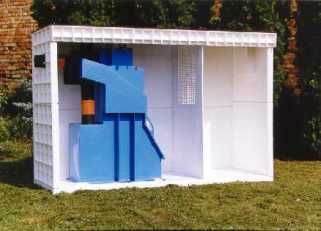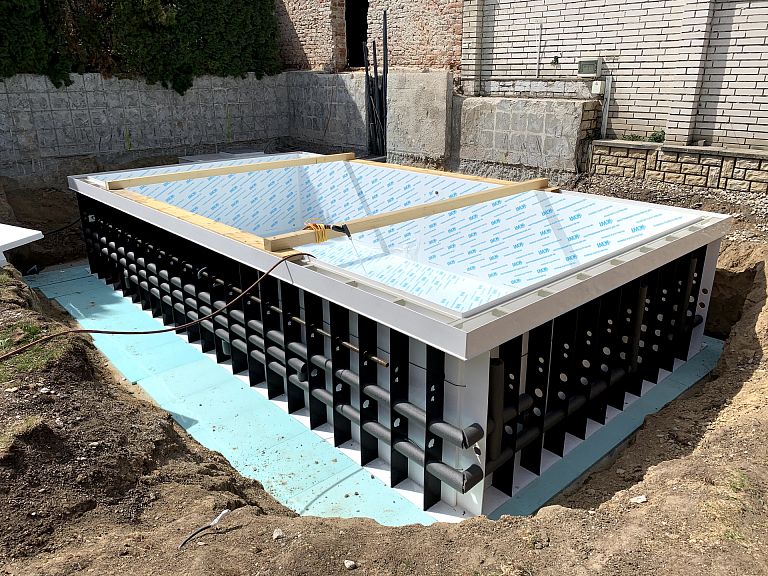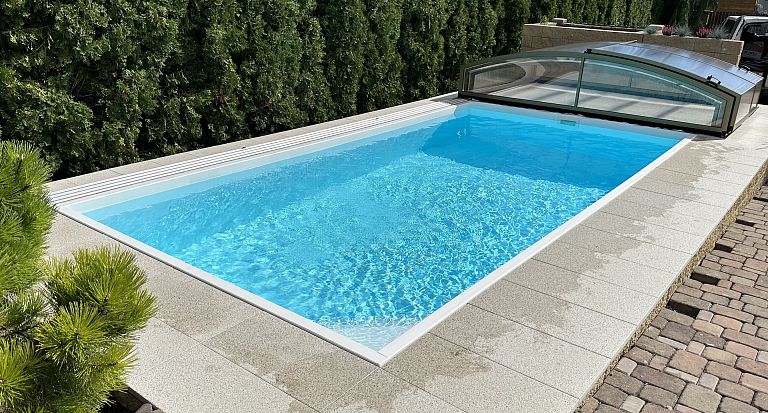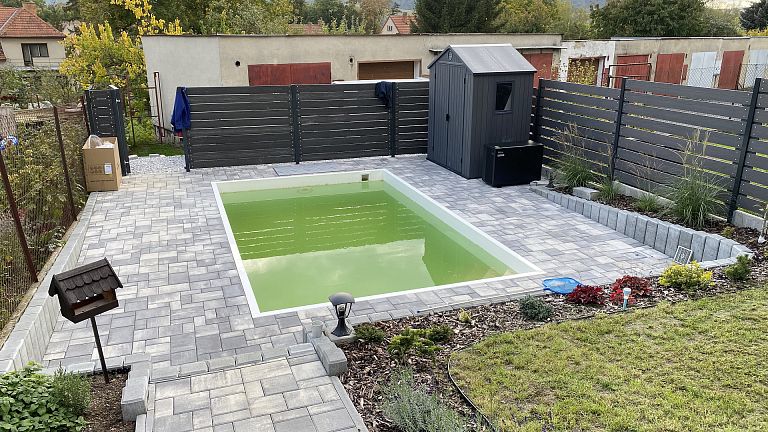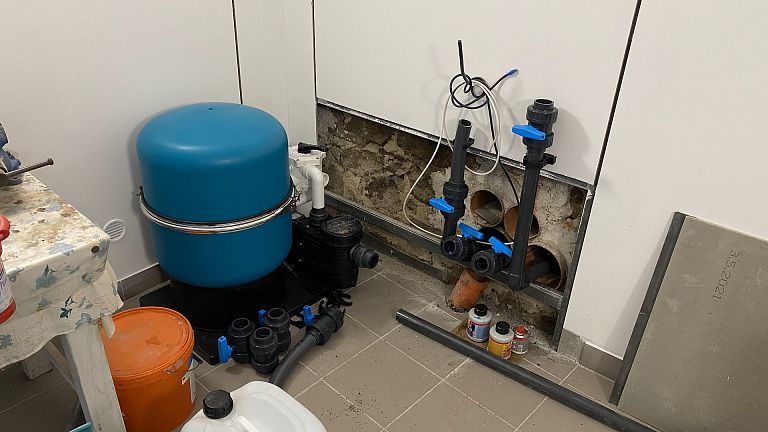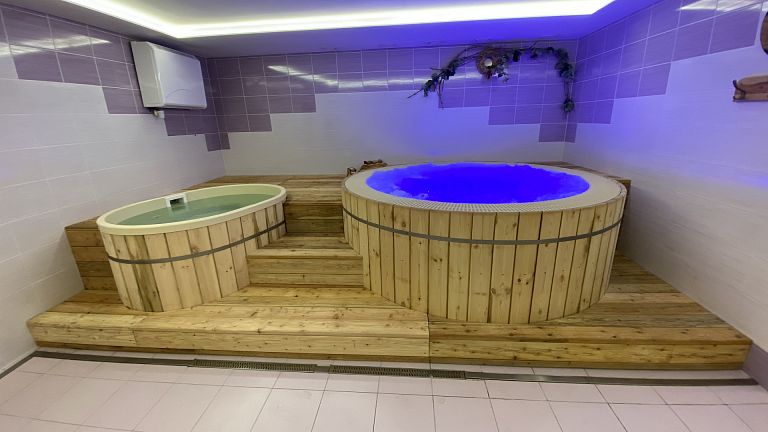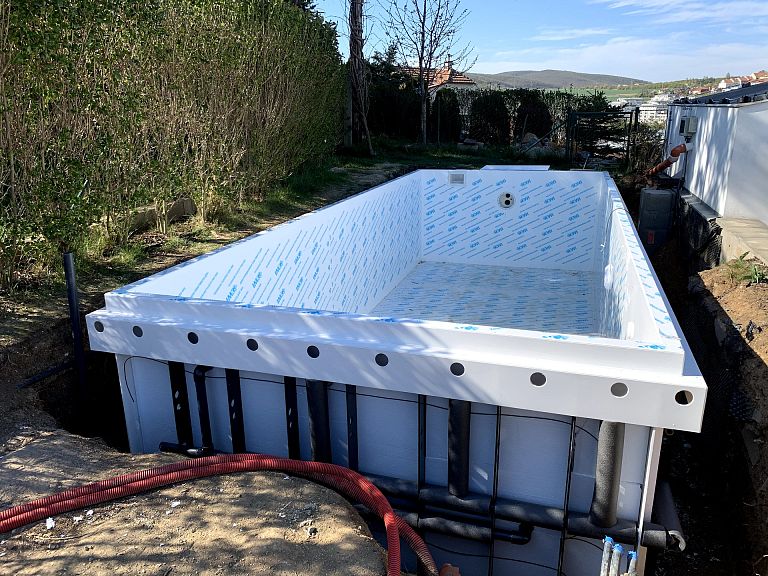Oil separators, also according to ČSN EN 858 light liquid separators, are used for wastewater treatment in places where there is a risk of oil spills. These are mainly parking and parking areas, car repair shops, engineering plants and other mechanisation centres. Light substance separators can also be used as part of the treatment system in the water recirculation circuit of vehicle washing facilities (e.g. car wash bays and gantry washing lines).
We offer 2 types of oil separators, the SEPUR separator without bypass or the SEPUR separator with bypass. Both types of light liquid separators are available in 2 basic designs - cylindrical or square.
Description and functions of the SEPUR bypassed oil liquid separator
The oil separators are cylindrical or square shaped propylene tanks. In the tank, 2 functional compartments are created by means of a dividing wall. In the first place, the oil-contaminated water flows through the influent pipe into the first part of the tank - the settling area (ORL), where coarse impurities (sand, gravel, etc.) are separated from the water by simple sedimentation. These sedimented coarse impurities settle to the bottom.
The oil-contaminated water then flows through the bore wall into the second oil separator compartment and through two openings into the slatted building. The slatted enclosure consists of a series of parallel plastic slats. The number of slats depends on the size of the settling area in relation to the flow rate of the polluted water.
As the flow passes over the slats, droplets of oil accumulate on the underside of the slats. When a certain size is reached, the droplets are pushed into the upper collection space due to the different specific gravities of water and oil. Small sludge grains, on the other hand, sink along the slats to the bottom of the build-up area.
The oil-free water continues to flow through the drainage chamber into the outlet pipe. The entire tank is closed with a lid made of UV-resistant polypropylene plates. The lid of the separator tank is also equipped with inspection hatches.
Technical data of the SEPUR separator
| ORL | Flow rate | Drainage | Dimensions in [m] | Inlet height | Height of outlet | Drain pipe | Weight | ||
| [1/s] | Area [m2] | L | Š | V | Height [m] | Vo [m] | [mm] | kg | |
| Sepur 2K | 2 | 170 | 2 | 1,6 | 1,50 | DN 150 | 300 | ||
| Sepur 4K | 4 | 340 | 2 | 1,6 | 1,50 | DN 150 | 400 | ||
| Sepur 6K | 6 | 500 | 2 | 1,6 | 1,50 | DN 150 | 500 | ||
| Sepur 3 | 3 | 250 | 3,00 | 1,16 | 2,03 | 1,65 | 1,55 | DN 150 | 500 |
| Sepur 6 | 6 | 500 | 4,00 | 1,16 | 2,03 | 1,65 | 1,55 | DN 150 | 700 |
| Sepur 9 | 9 | 750 | 3,00 | 2,16 | 2,03 | 1,7 | 1,60 | DN 200 | 850 |
| Sepur 12 | 12 | 1 000 | 4,00 | 2,16 | 2,03 | 1,7 | 1,60 | DN 200 |
1 000 |
| Sepur 15 | 15 | 1 250 | 4,00 | 2,16 | 2,53 | 1,9 | 1,80 | DN 200 | 1 100 |
| Sepur 20 | 20 | 1 700 | 5,00 | 2,16 | 2,53 | 1,7 | 1,60 | DN 250 | 1 320 |
| Sepur 30 | 30 | 2 500 | 6,16 | 2,16 | 2,53 | 1,7 | 1,60 | DN 250 | 1 500 |
The letter K in the table indicates the cylindrical version. If you choose the cylindrical shape of the separator, always bear in mind that it is necessary to perform a concreting.
Oil separators with bypass
A bypass is a device that allows a flow rate greater than the maximum allowable to be diverted. The use of a bypass must remain limited to cases where major contamination of light liquids is unlikely to occur during heavy rainfall.
Unlike the previous type, which removes all swollen water, this type is designed to capture and remove the beginning of the storm surge with the highest concentration of debris and oil. During higher intensity rainfall events, and therefore greater dilution of debris, a portion of the rain flows through the interceptor and the portion exceeding the interceptor capacity then flows under the northern wall outside the interceptor. In the event of an accident at the staging area (i.e. a major spill), all the oil is captured in the separator.
This separator is designed for an outdoor environment under shelter according to Article 330300. The area above the water surface is an environment with increased aggressiveness according to Article 3.2.4 and 3.2.5 of CSN 330300.
If the separator is located in the building, sufficient ventilation must be ensured. The design and possible wiring, including the connection to possible appliances, must correspond to this specified environment.
Where can light liquid separators with bypass be used?
The square bypass oil separator is specifically designed for parking lots and parking areas at department stores, hotels and other large paved areas intended for parking cars and trucks without any other handling of oil.
This separator is designed for outdoor environments under shelter according to Article 330300. The area above the water surface is an environment with increased aggressiveness according to Article 3.2.4 and 3.2.5 of CSN 330300.
Technical data of the bypass separator
| Type | Max. flow rate | Drainage | Dimensions in [mm] | Weight | |||||
| [1/s] | Area [m2] | L | Š | V | You | In | DN | [kg] | |
| 30/10-O | 30 | 2 500 | 5 160 | 2 000 | 2 340 | 1 850 | 1 700 | 250 | 1 380 |
| 60/15-O | 60 | 5 000 | 6 160 | 2 000 | 2 340 | 1 850 | 1 700 | 300 | 1 580 |
| 90/20-O | 90 | 7 500 | 7 160 | 2 000 | 2 340 | 1 850 | 1 700 | 300 | 1 880 |
| 120/30-O | 120 | 10 000 | 7 160 | 2 500 | 2 340 | 1 850 | 1 700 | 400 | 2 150 |
More information on oil separators
The tanks and the functional spaces in these tanks are made of polypropylene plates and wall elements. The slatted construction is made of PVC sheets and is used by our company under license. It is patented by the Austrian company PURATOR.
The inlet for connection to the sewerage system is made with polypropylene pipe DN 150-250. The outlet is also made with polypropylene pipe DN 150-250. The inlet and outlet can be adapted to the customer's requirements and local conditions.
All types of separators can be equipped with an emergency float shut-off of the separator outlet in case of high level of separated oil. This shut-off must be ordered separately if required.
See also oil and grease traps used to separate oil and trap grease from wastewater.
The European standard EN 858 applies to light liquid separators:
Standard: EN 858 Light liquid separators
- Part 1 Design and testing (for the manufacture of separators)
- Part 2 Selection of nominal size, installation, operation and maintenance (for design and operation of separators).
This standard EN 858-2 provides requirements and guidance for the selection of the size and type of separator, the selection of assemblies and their use, fitting, connection to pipework, and for the installation, operation, inspection and maintenance of light liquid separators (e.g. oil and petrol - formerly petroleum).








